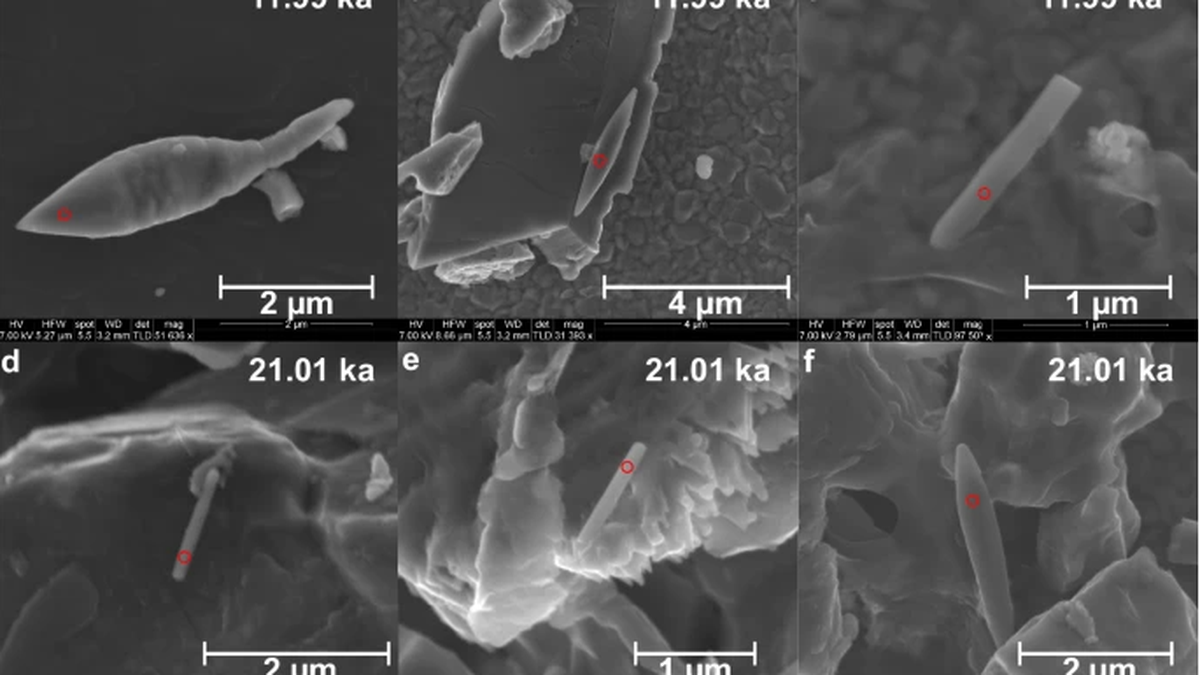In the depths of the Bay of Bengal, scientists have uncovered a remarkable discovery – a 50,000-year-old sediment containing a giant magnetofossil, which stands as one of the youngest found to date.
Understanding Magnetofossils
- Magnetofossils are fossilized remains of magnetic particles created by magnetotactic bacteria, also known as magnetobacteria, preserved within geological records.
- These bacteria, mostly prokaryotic organisms, align themselves along the Earth’s magnetic field.
Historical Background
- Magnetotactic bacteria were first described in 1963 by Salvatore Bellini and later in 1975 by Richard Blakemore.
- Blakemore’s electron microscope studies revealed the bacteria’s compass-like structures, aiding navigation through iron-rich particles.
Formation and Function of Magnetofossils
- Magnetotactic bacteria create tiny crystals of magnetite or greigite to navigate changing oxygen levels in water.
- Fossils left by these bacteria offer insights into past environmental conditions.
Mystery of Giant Magnetofossils
- Previous studies attributed the origins of giant magnetofossils to various factors including hyperthermal vents, comet impacts, or changes in oceanic conditions.
- The origin of giant magnetofossils remained elusive, often associated with extreme warming periods like the late Palaeocene epoch.
Recent Discovery
- A study published in Nature found a sediment sample from the late Quaternary period in the Bay of Bengal, approximately 50,000 years old, containing a giant magnetofossil.
- Scientists from CSIR-National Institute of Oceanography, Goa, utilized magnetic analyses and electron microscopy for examination.
Sediment Analysis
- The sediment core primarily consisted of pale green silty clays.
- Abundant benthic and planktic foraminifera were found, indicating sea bed and free-floating organisms.
Microscopic Examination
- High-resolution transmission electron microscopy revealed magnetofossils in various shapes like needles, spindles, bullets, and spearheads.
- Both conventional and giant magnetofossils were identified.
Environmental Context
- The Bay of Bengal at 1,000-1,500 m depth exhibits low oxygen concentration.
- Fluctuations in monsoon activity during the last Glacial Maximum-Holocene period influenced sedimentation.
Role of Rivers and Oceanographic Processes
- Rivers like Godavari, Mahanadi, Ganga-Brahmaputra, Cauvery, and Penner contributed to magnetofossil formation.
- Nutrient-rich sediment from these rivers combined with organic carbon in suboxic conditions favored magnetotactic bacteria growth.
Long-Term Persistence
- Presence of magnetofossils indicates prolonged suboxic conditions in the Bay of Bengal, allowing sustained bacterial activity.
Multiple Choice Questions (MCQs):
- Who first described magnetotactic bacteria?
- A) Salvatore Bellini
- B) Richard Blakemore
- C) Both A and B
- D) None of the above
- Answer: C) Both A and B
- What are magnetofossils?
- A) Remains of magnetic particles from ancient rocks
- B) Fossilized remains of magnetotactic bacteria
- C) Mineral deposits found in deep ocean sediments
- D) None of the above
- Answer: B) Fossilized remains of magnetotactic bacteria
- Where was the 50,000-year-old sediment containing a giant magnetofossil discovered?
- A) Indian Ocean
- B) Bay of Bengal
- C) Pacific Ocean
- D) Arctic Ocean
- Answer: B) Bay of Bengal
- What method was primarily used to examine the sediment sample in the study?
- A) Radiocarbon dating
- B) Magnetic analyses and electron microscopy
- C) DNA sequencing
- D) X-ray diffraction
- Answer: B) Magnetic analyses and electron microscopy
- What role did rivers play in the formation of magnetofossils in the Bay of Bengal?
- A) They contributed to extreme warming periods
- B) They facilitated oxygen-rich conditions
- C) They supplied reactive iron and organic carbon
- D) They caused fluctuations in monsoon activity
- Answer: C) They supplied reactive iron and organic carbon
